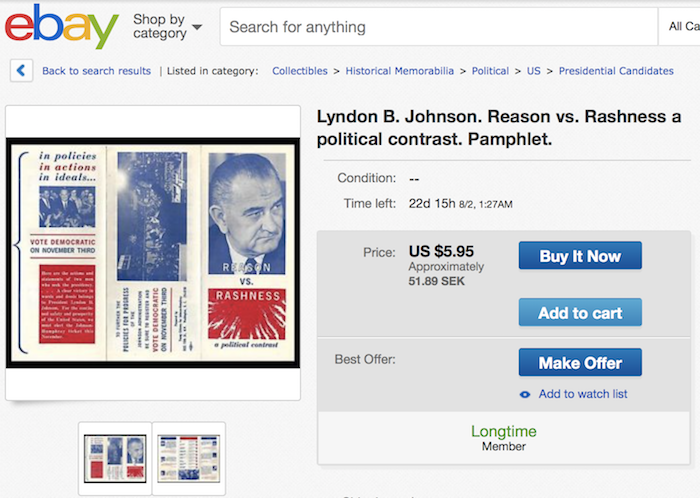Not that long ago almost all political advertising was clearly visible in the physical world. Posters, newspaper ads and pamphlets were widely circulated, collected and preserved. It is not unlikely that you are able to walk into an antiquarian book shop and find examples of political propaganda hundreds of years old. Other copies will end up in attics, basements, shoeboxes and occasionally be donated to archives or sold on eBay. It was easier to see who said what and to whom. This enables modern day researchers to understand how campaigns worked and what issues people were engaging with. Such research contributes to new knowledge about our society and help us understand how we got where we are.
Little to no insight in social media political advertising
In contrast, political advertisements on social media like Facebook may have been viewed by millions of people but there may be no trace of it after the campaign has ended. Highly personalized targeted ads means that specific groups may only see ads tailored to them. We don’t know how much money was spent on which ads by whom or in which country they were based. A journalist or a researcher will find it hard to see ads outside of their own target group.
There are no digital parallels to the attics, basements and antiquarian book shops yet.
Web archives (e.g. Internet Archive) are doing a tremendous job preserving the open web, but the walled gardens and interactivity of social media prevent large scale preservation.
Facebook has a great initiative to increase transparency in political advertising (link only works if you are logged into Facebook). The problem is that the content needs to end up at memory institutions to increase chances it survives the day when Facebook is gone. Also, you depend on Facebook and the advertiser to classify what counts as a political ad. This means, in practice, that we may have very little material left of how politics and societies were influenced by political propaganda in present time.
The digital shoe boxes and attics - how you can help
To preserve at least some political ads on social media for the future we need to have more people set up their digital shoeboxes and make sure ad data is copied, stored and preserved. There are several initiatives where you can help out:
- ProPublica, runs the Political Ad Collector project. By installing a web extension in your browser you can help detect and archive political ads you see on your Facebook feed. Their API makes it possible to export ad data (I use it to publish Swedish political ads here). Get lots of local copies. Ask your friends to help out with reporting.
- Engage with your local community in archiving things that matter to you. Maybe you have a community archive already, Maybe they need help with digital skills and tools to get started? Set up Munin – a Facebook and Instagram indexer and archiver – and archive your local politicians’ Instagram/Facebook accounts.
- Learn how to use Internet Archive, Archive.is, Perma.cc, Webrecorder.io and other web archives so that political content is stored in as many locations as possible.
- Justin Littman has a command line tool to harvest ads from the Facebook political ads transparency initiative. If you know how to run command line programs you can help out by collecting ads from the topics you are interested in and save them locally and publish them on the open web.
- Build more tools for social media collection. Check out these intiatitives for starting points:
- Munin: a Facebook and Instagram indexer and archiver
- Warcworker: a dockerized queued high fidelity web archiver
- Warcprox: a http proxy that stores its traffic to disk in WARC format.
- Warcreate: Chrome extension to archive pages from the browser.
